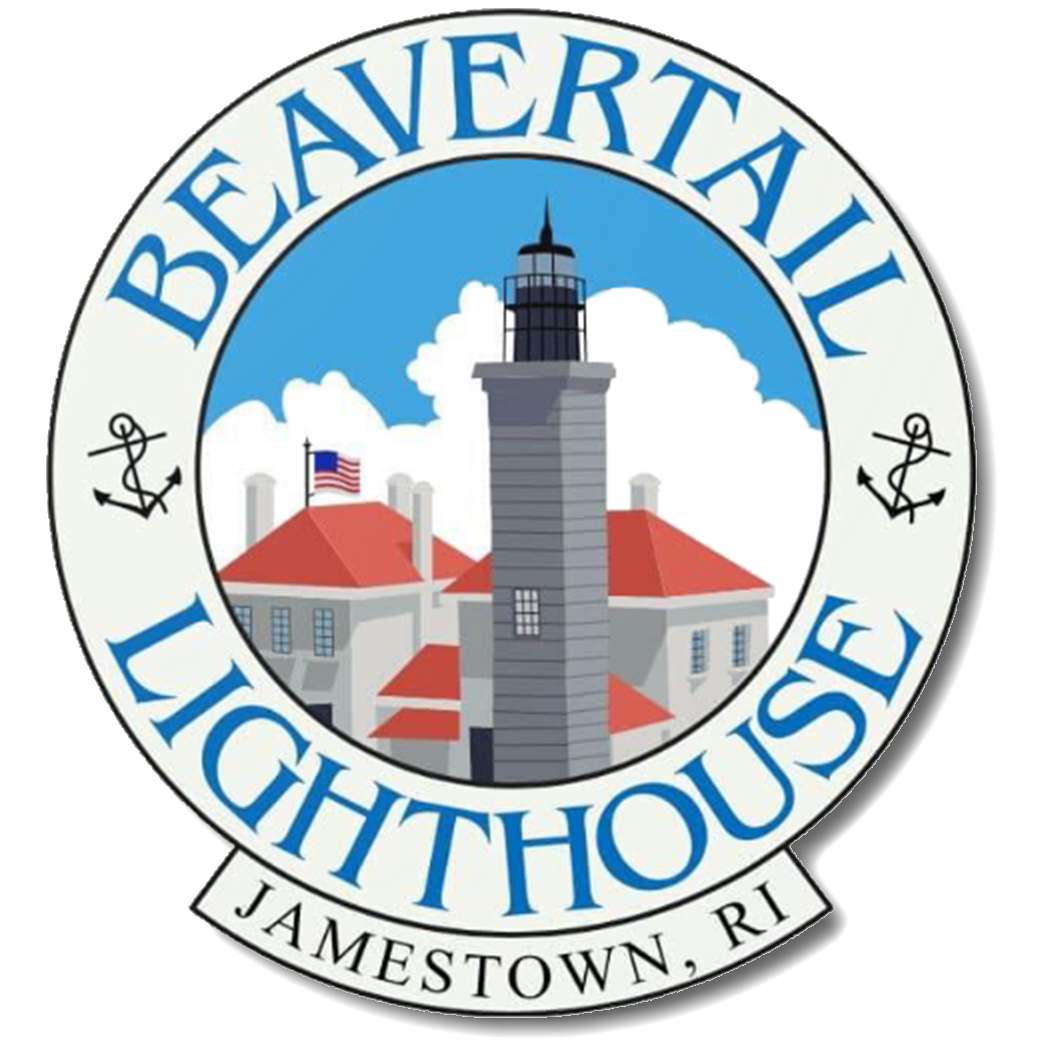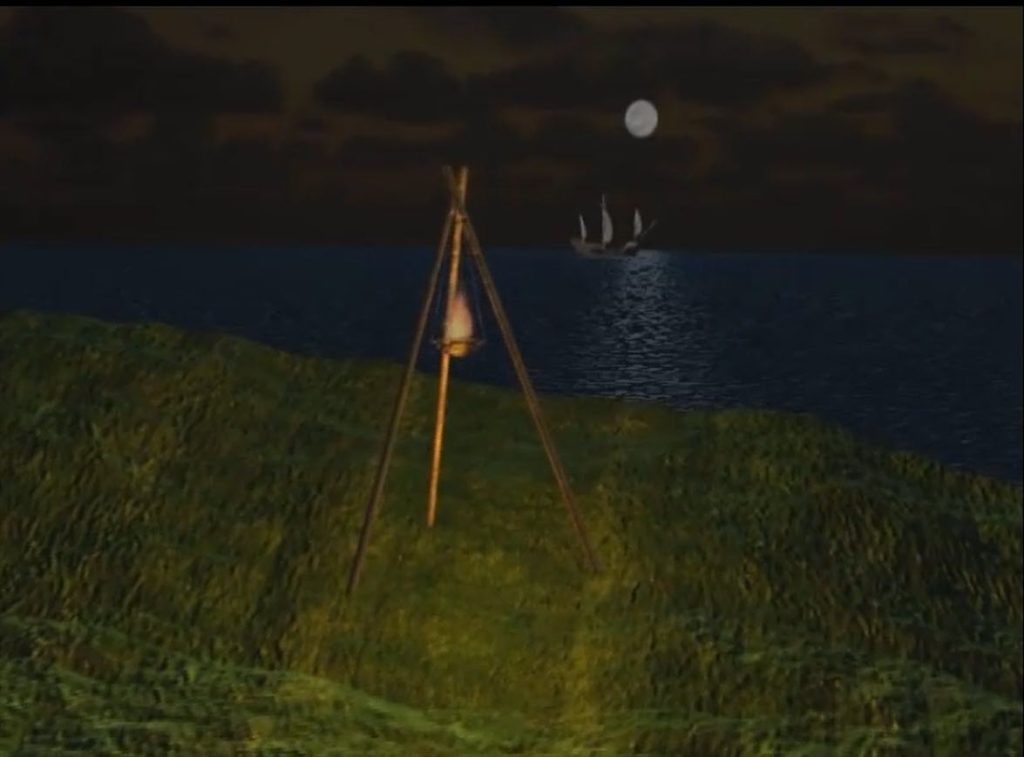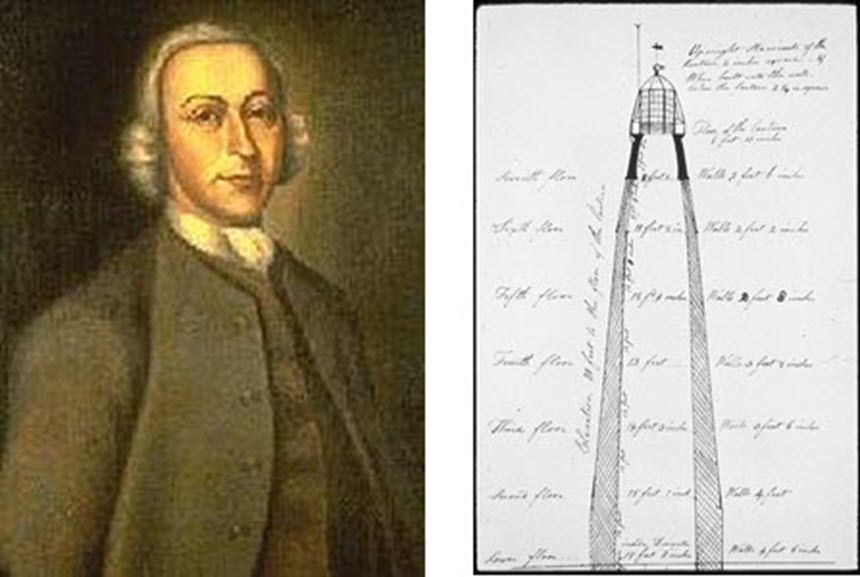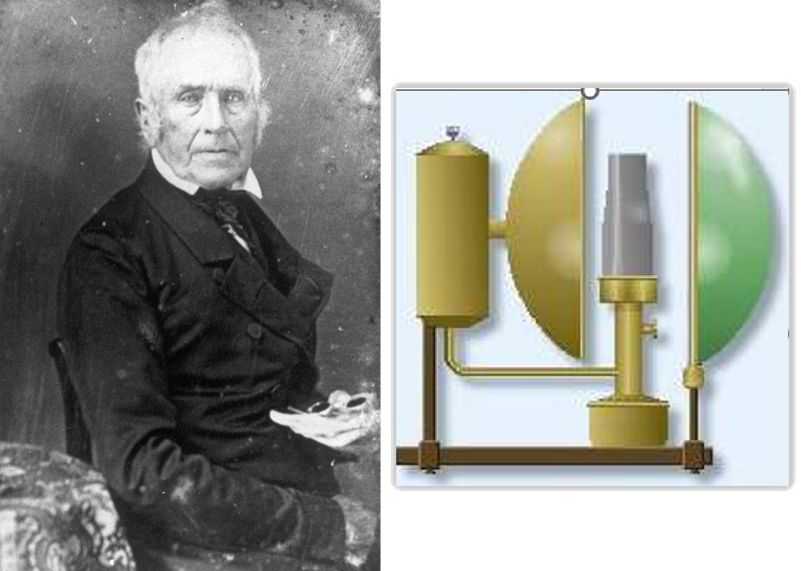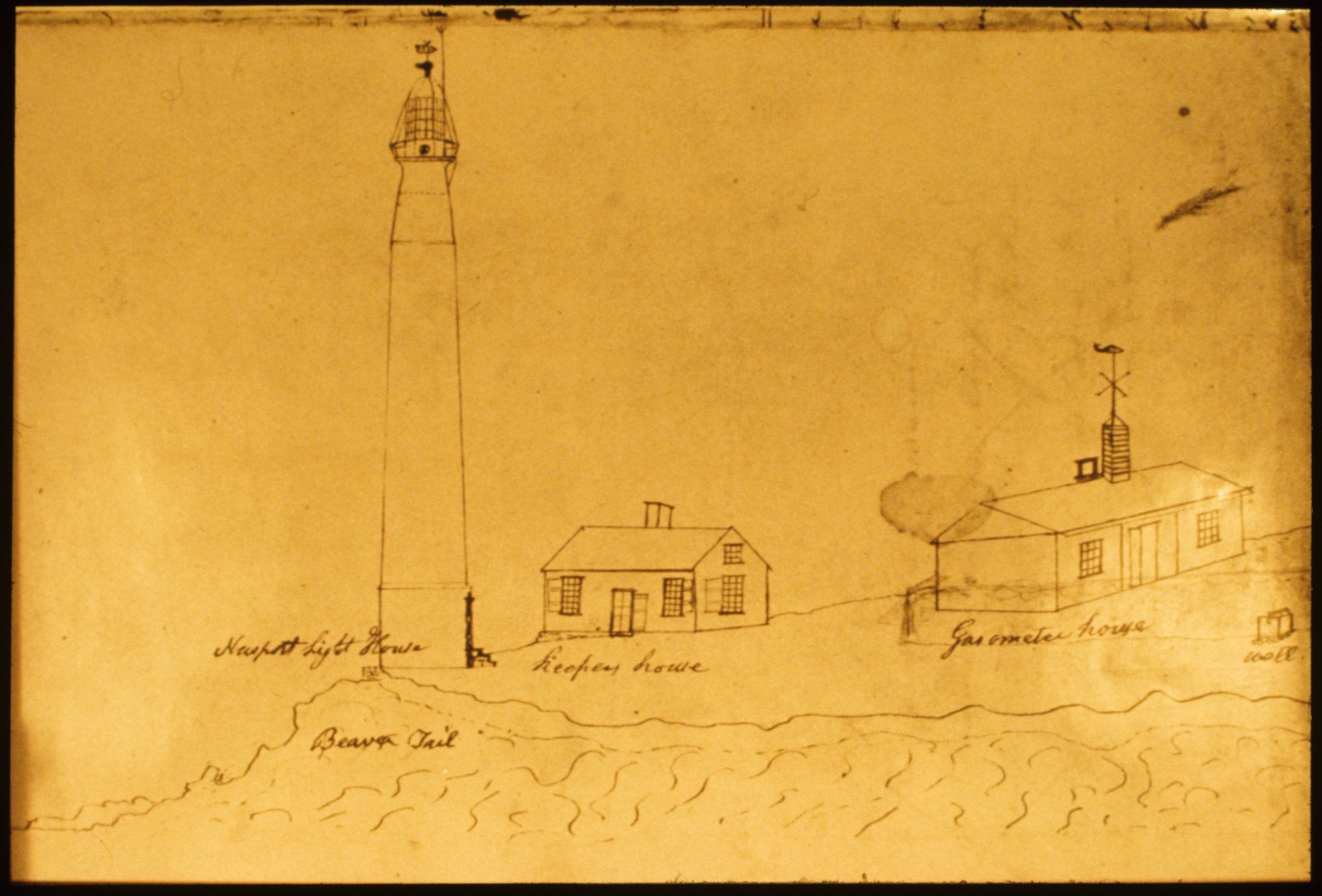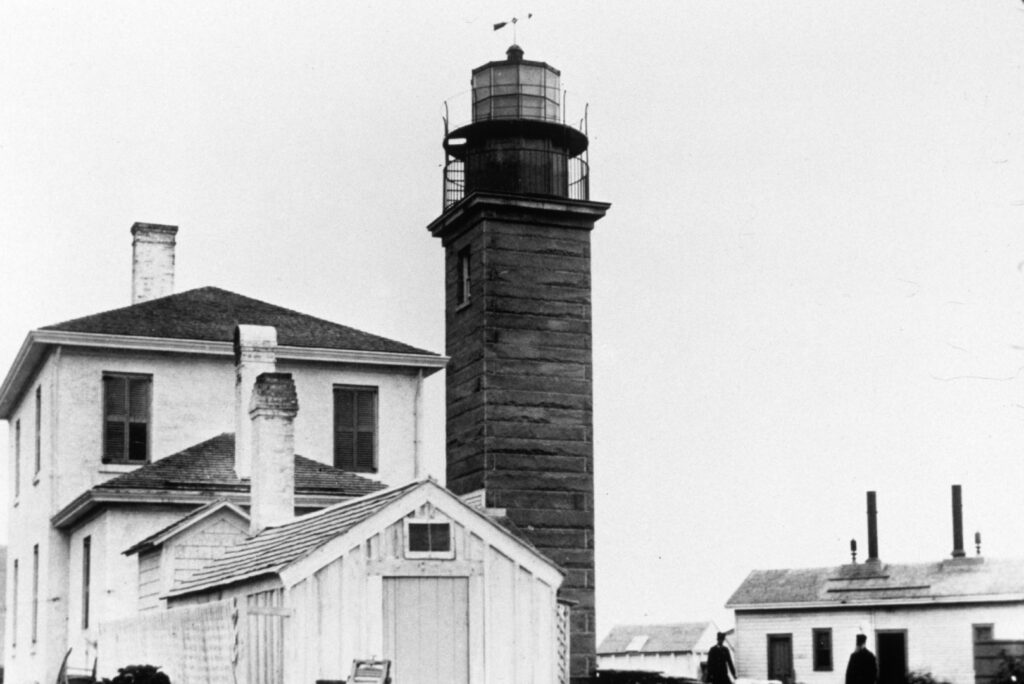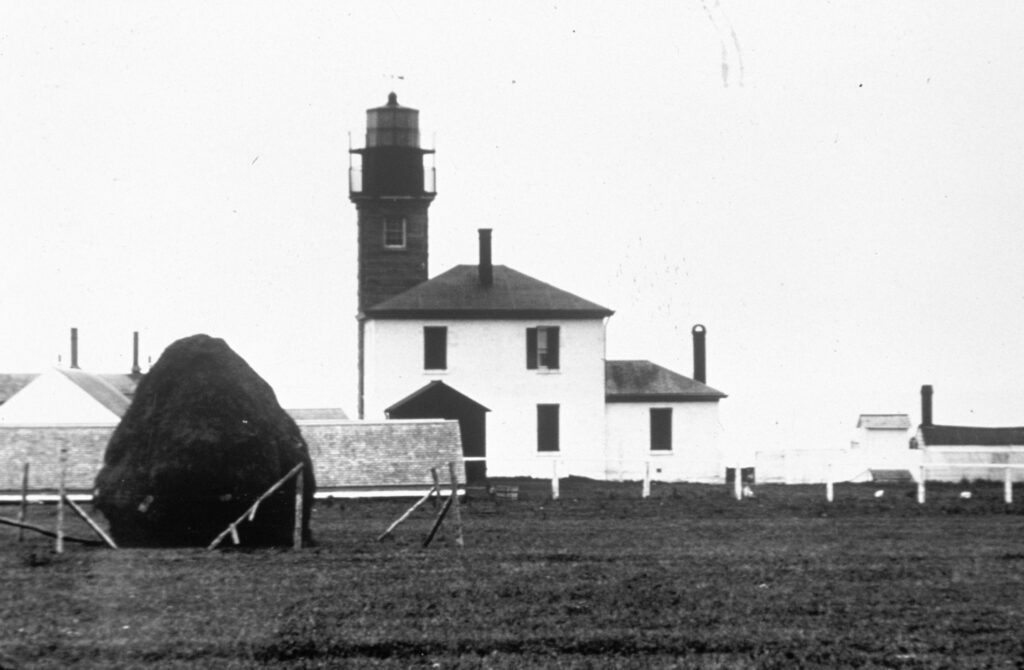1657
Conanicut Island was purchased from the Narragansett Indians by a group of settlers from Newport.
1709
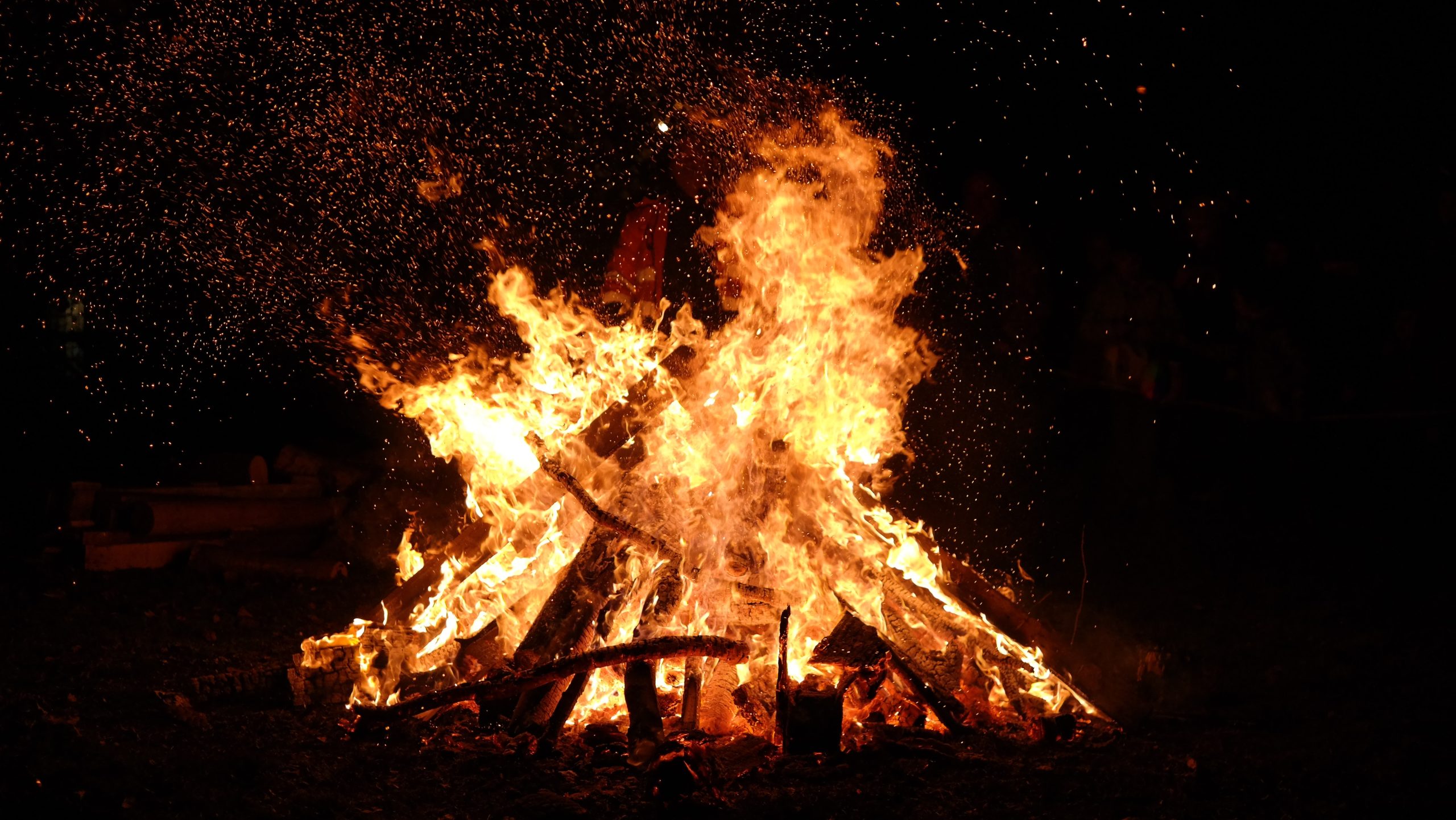
The need for a Navigation Light
Newport and Bristol had become major ports for ship owners in the Colonies and were harassed by the Point Judith shoals and Brenton reefs at the entrance of Narragansett Bay .
60 to 90 percent of the ships owned were slave ships generating enormous profits depositing human cargo along the tlantic coast. A nighttime navigation aid location on Beavertail Point was ideal for safe guidance. Its form was a wood fire.
1712
The first official request for a permanent navigational aid (a lighthouse) was recorded in the documents of the Newport Town Meeting.

Jamestown Proprietor Records Watch House Fire Beacon
Town Council of Jamestown on the 9th day of June 1712 ordered Gershom Remington to set and build at Beavertaile and have Indians watch the light.
Benedick Arnold was warranted to look after the watch and to see it faithfully kept.
1749
The First Lighthouse
In February, the following appeared in the Newport Town Record: “A committee was appointed to build a Lighthouse at Beavertail on the Island of Jamestown, alias Conanicut, as there appears a great necessity for a lighthouse as several misfortunes have happened lately for want of a light.” Construction of the first lighthouse, the third in the colonies, began in May and ended in September. Peter Harrison was the architect. The lighthouse was constructed of wood. The tower was 58 feet high to cornice with an 11-foot lantern on top. Abel Franklin was appointed the first keeper.
1753
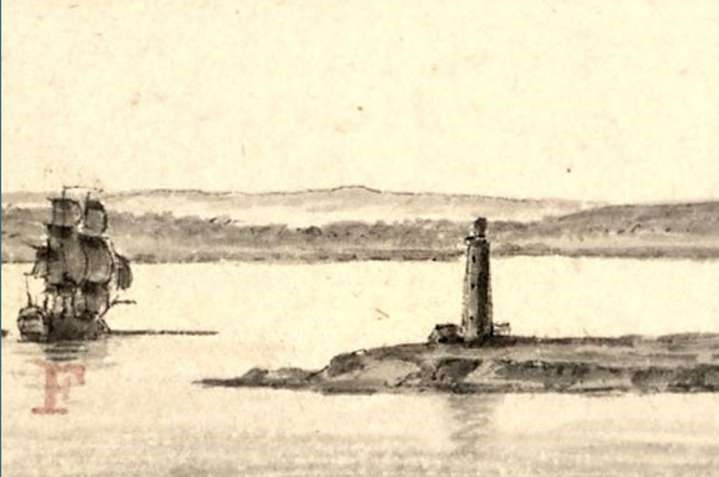
Lighthouse Destroyed by Fire
The wooden lighthouse was rebuilt after a fire destroyed the original. Stones from Goat Island were used as building materials. The foundation is visible today 100 feet in front of the present light tower. Abel Franklin manned his post during construction, warning ships with a hand held lantern.
1778
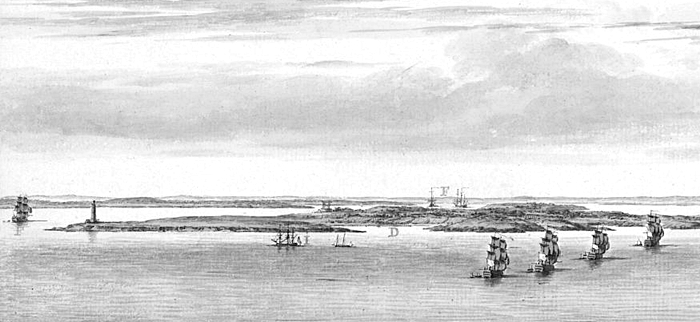
British Burn Beavertail
British soldiers retreating from Newport burned the tower and removed the lighting equipment, leaving the beacon darkened for the rest of the Revolution.
Above is Pierre Ozanne’s drawing of French fleet off Newport in 1778 showing second Beavertail Lighthouse. John Bowers was the Keeper at this time. This sketch was found in Paris’s Louvre art museum
1783
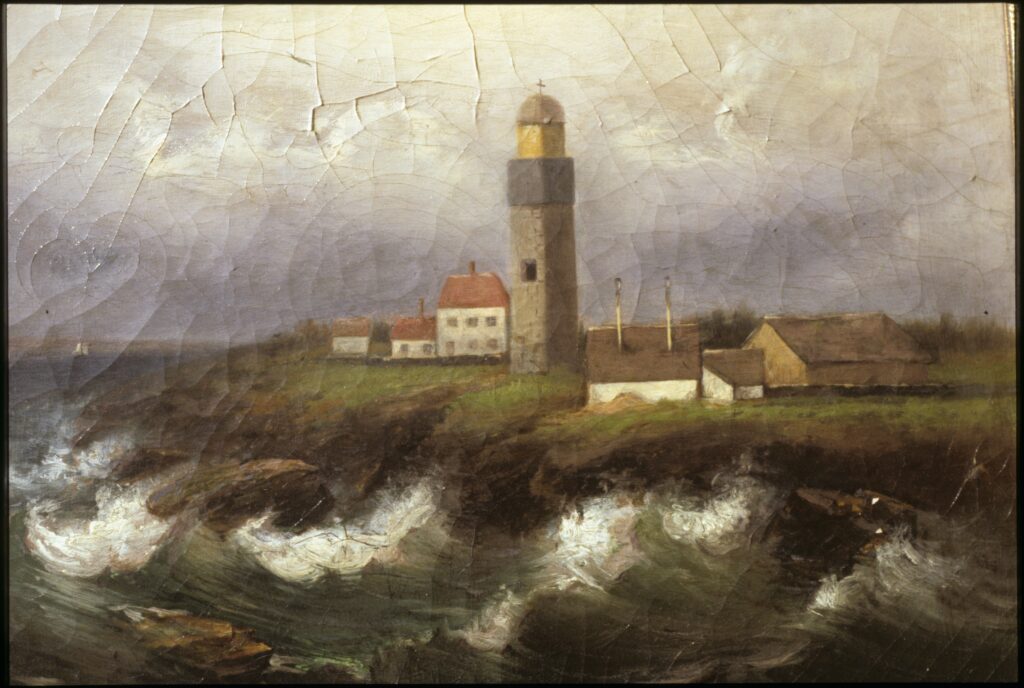
Lighthouse Repaired
Repair of the lighthouse was completed. United States Congress established its authority over the nation’s twelve lighthouses. Not until 1793 did the Rhode Island General Assembly agree to transfer Beavertail Light to the Federal Government.
1829
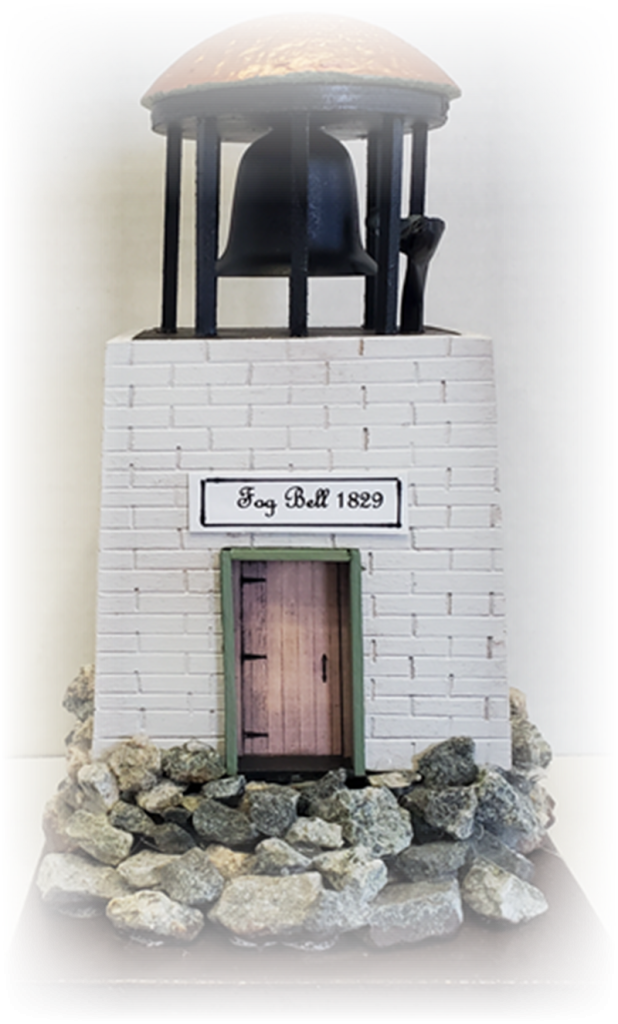
First Fog Bell in US
Beavertail was the first Lighthouse in America using a bell for a fog signal. Constructed in 1829 the 600 lb bell on top of a 12′ tower was located nearby the existing 1749 lighthouse foundation.
The remains of the 1829 fog bell foundation are still visible next to the present fog signal within the chain-link wire fence.
Complete with a wind-up drum mechanism inside the tower, a hammer struck the bell 10 times per minute when activated.
This model was built by Varoujan Karentz following specifications written in 1829 by Christ, Ellery ‘Collector, Superintendent of Light-Houses’
1851
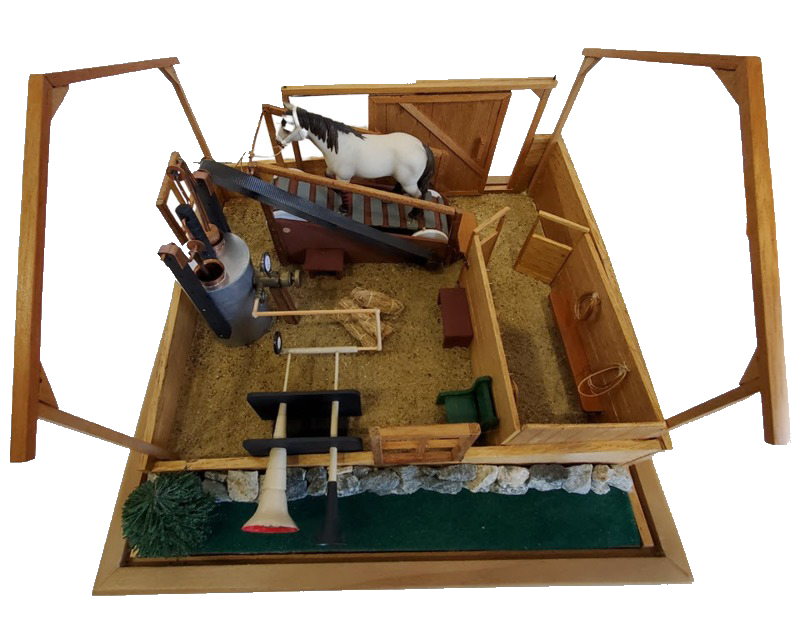
Horse Driven Fog Signal
Model of horse-driven fog signal used Beavertail in 1851.
It was designed by David Daboll of New London CT. to operate his famous fog trumpet. The horse, walking the endless treadmill, compressed air into a tank, which in turn modulated the trumpet.
This model was made by Varoujan Karentz from Daboll sketches.
1852
United States Lighthouse Board was established, and the agency quickly set about creating a modern lighthouse system.
1856
A new lighthouse was constructed to replace the deteriorating 1753 structure. The new one measured 10 feet square, and 64 feet to the beacon. The new optic was a third-order Fresnel lens imported from France, a sparkling beehive of glass similar to that now housed in the Museum. The old tower was removed and on its foundation was built a fog-whistle house.
1857
The first in a series of experiments involving fog-warning devices took place at Beavertail. A Diboll “Fog Trumpet” — driven by compressed air — was tested. This was followed by the installation of the first steam powered foghorn in 1857. Several other “firsts” in foghorn equipment were tested at Beavertail over the next 40 years.
1931
The first electric light beacon was installed during the tenure of Captain George T. Manders, who served as keeper for 24 years.
1938
The Great Hurricane of 1938 exposed the foundation of the original lighthouse, 100 feet in front of the present light. Hidden by the fog whistle building, it had long been forgotten.
1939
The Bureau of Lighthouses — which in 1910 had replaced the Lighthouse Board — relinquished its responsibilities for navigational aids to the United States Coast Guard, which continues these duties today.
1972
The beacon was automated, part of a program which in 1989 ended the profession of lighthouse keeping in the United States (except for the Boston Light). BM 1st Class John Baxter was the last keeper to serve at Beavertail, 1970-1972.
1977
The Beavertail Light Station placed on the National Register of Historic Places
1983
The Rhode Island Parks Association began restoring the deteriorating Assistant Keeper’s House as a lighthouse museum.
1989
The Beavertail Lighthouse Museum was opened, the result of a joint effort by the Rhode Island Parks Association, the Rhode Island Department of Environmental Management, the Town of Jamestown, and the United States Coast Guard.
1991
The fourth-order Fresnel lens was removed and replaced by a rotating beacon. This lens is now displayed in the Beavertail Lighthouse Museum.
1993
Beavertail Lighthouse Museum Association founded
2010
Major Site Restoration
A major restoration of the site buildings including the granite light tower were undertaken by the BLMA costing $350,000. Project funded by grants from Champlin Foundation, RI Historic Preservation and Heritage Commission, BLMA members and donors.
2012
1749 Foundation Restored
Original 1749 Foundation restored. Click for photos
2013
Museum Expands
Museum expanded 3 times its original size into 4 site buildings, including upgraded exhibits, a small theatre and visitor interactive displays. Project funded by the van Beuren Foundation.
2014
Fog Signal Building Restored
Fog Signal Building restored and equipped with two replica fog horns.
